Description
Inactive ingredient:
Lactose, povidone K30, Crospovidone, Disodium hydrogen phosphate, polyethylene glycol 6000, Methacrylic acid copolyma.
PHARMACEUTICAL FORM:
Gastro-resistant pellets in capsules
20 mg: Size two hard gelatin capsules with opaque gray body and opaque pink cap containing off-white enteric coated pellets.
40 mg: Size zero hard gelatin capsules with white body and opaque gray cap containing off white enteric coated pellets.
THERAPEUTIC INDICATIONS:
Treatment of Gastroesophageal Reflux Disease (GERD)
Healing of Erosive Esophagitis
(PROTOPAN) is indicated for the Short-term treatment (4 to 8 weeks) in the healing and symptomatic resolution of diagnostically confirmed erosive esophagitis. For those patients who have not healed after 4 to 8 weeks of treatment, an additional 4 to 8 week course of (PROTOPAN) may be considered.
Maintenance of Healing of Erosive Esophagitis
(PROTOPAN) is indicated to maintain symptom resolution and healing of erosive esophagitis. Controlled studies do not extend beyond 6 months.
Symptomatic Gastroesophageal Reflux Disease
(PROTOPAN) is indicated for short-term treatment (4 to 8 weeks) of heartburn and other symptoms associated with GERD in adults and children 1 year or older.
Risk Reduction of NSAID-Associated Gastric Ulcer
PROTOPAN is indicated for the reduction in the occurrence of gastric ulcers associated with continuous NSAID therapy in patients at risk for developing gastric ulcers. Patients are considered to be at risk due to their age (> 60) and/or documented history of gastric ulcers. Controlled studies do not extend beyond 6 months.
H. pylori Eradication to Reduce the Risk of Duodenal Ulcer Recurrence
Triple Therapy (PROTOPAN plus amoxicillin and clarithromycin): PROTOPAN, in combination with amoxicillin and clarithromycin, is indicated for the treatment of patients with H. pylori infection and duodenal ulcer disease (active or history of within the past 5 years) to eradicate H. pylori. Eradication of H. pylori has been shown to reduce the risk of duodenal ulcer recurrence.
In patients who fail therapy, susceptibility testing should be done. If resistance to clarithromycin is demonstrated or susceptibility testing is not possible, alternative antimicrobial therapy should be instituted.
Pathological Hypersecretory Conditions Including Zollinger-Ellison Syndrome
(PROTOPAN)is indicated for the long-term treatment of pathological hypersecretory conditions, including Zollinger-Ellison Syndrome.
Patients requiring continued NSAID therapy
– healing of gastric ulcers associated with NSAID therapy.
– prevention of gastric and duodenal ulcers associated with NSAID therapy in patients at risk.
Posology and method of administration
The capsules should be swallowed whole with liquid and must not be chewed or crushed. Stir until the capsules disintegrate and drink the liquid with the capsules immediately or with in 30 minutes. rinse the glass with half a glass of water and drink. The capsules.
For patients who cannot swallow, the capsules can be opened in non-carbonated water Adults and adolescents from the age of 12 years
Gastroesophageal Reflux Disease (GERD)
– Treatment of erosive reflux esophagitis
40 mg once daily for 4 weeks.
An additional 4 weeks treatment is recommended for patients in whom esophagitis has not healed or who have persistent symptoms.
– Long -term management of patients with healed esophagitis to prevent relapse 20 mg once daily.
– Symptomatic treatment of gastroesophageal reflux disease (GERD)
20 mg once daily in patients without esophagitis. If symptom control has not been achieved after 4 weeks, the patient should be further investigated. Once symptoms have resolved, subsequent symptom control can be achieved using 20mg once daily. In adults, an on demand regimen taking 20mg once daily, when needed, can be used. In NSAID treated patients at risk of developing gastric and duodenal ulcers, subsequent symptom control using an on demand regimen is not recommended.
Adults
In combination with an appropriate antibacterial therapeutic regimen for the eradication of Helicobacter pylori and
– healing of Helicobacter pylori associated duodenal ulcer and
– Prevention of relapse of peptic ulcers in patients with Helicobacter pylori associated ulcers
20 mg (Protopan) with 1 g amoxicillin and 500mg clarithromycin, all twice daily for 7 days .
Patients requiring continued NSAID therapy
– healing of gastric ulcers associated with NSAID therapy: the usual dose is 20 mg once daily. The treatment duration is 4-8 weeks.
– Prevention of gastric and duodenal ulcers associated with NSAID therapy in patients at risk: 20mg once daily.
Treatment of Zollinger Ellison Syndrome
The recommended initial dosage is (Protopan) 40 mg twice daily. The dosage should then be individually adjusted and treatment continued as long as clinically indicated. Based on the clinical data available, the majority of patients can be controlled on doses between 80 to 160 mg esomeprazole daily. With doses above 80 mg daily, the dose should be divided and given twice daily.
Children below the age of 12 years
PROROPAN should not be used in children younger than 12 years since no data is available.
Impaired renal function
Dose adjustment is not required in patients with impaired renal function. Due to limited experience in patients with severe renal insufficiency, such patients should be treated with caution.
Impaired hepatic function
Dose adjustment is not required in patients with mild to moderate liver impairment. For patients with severe liver impairment, a maximum dose of 20 mg PROTOPAN should not be exceeded.
Elderly
Dose adjustment is not required in the elderly.
Contraindications
Known hypersensitivity to esomeprazole, substituted benzimidazoles or any other constituents of the formulation. Esomeprazole like other PPls should not be administered with atazanavir.
Special warnings and special precautions for use
Concurrent Gastric Malignancy
Symptomatic response to therapy with ESOMEPRAZOLE does not preclude the presence of gastric malignancy.
Atrophic Gastritis
Atrophic gastritis has been noted occasionally in gastric corpus biopsies from patients treated long-term with omeprazole, of which esomeprazole is an enantiomer.
Risks of Amoxicillin (as Part of H. pylori Triple Therapy)
Serious and occasionally fatal hypersensitivity (anaphylactic) reactions have been reported in patients on penicillin therapy. These reactions are more apt to occur in individuals with a history of penicillin hypersensitivity and/or a history of sensitivity to multiple allergens.
There have been well documented reports of individuals with a history of penicillin hypersensitivity reactions that have experienced severe hypersensitivity reactions when treated with a cephalosporin. Before initiating therapy with any penicillin, careful inquiry should be made concerning previous hypersensitivity reactions to penicillins, cephalosporins, and other allergens. If an allergic reaction occurs, amoxicillin should be discontinued and the appropriate therapy instituted.
Serious anaphylactic reactions require immediate emergency treatment with epinephrine. Oxygen, intravenous steroids, and airway management, including intubation, should also be administered as indicated.
Pseudomembranous colitis has been reported with nearly all antibacterial agents, including clarithromycin and amoxicillin, and may range in severity from mild to life threatening. Therefore, it is important to consider this diagnosis in patients who present with diarrhea subsequent to the administration of antibacterial agents.
Treatment with antibacterial agents alters the normal flora of the colon and may permit overgrowth of clostridia. Studies indicate that a toxin produced by Clostridium difficile is a primary cause of “antibiotic-associated colitis”.
After the diagnosis of pseudomembranous colitis has been established, therapeutic measures should be initiated. Mild cases of pseudomembranous colitis usually respond to discontinuation of the drug alone.
In moderate to severe cases, consideration should be given to management with fluids and electrolytes, protein supplementation, and treatment with an antibacterial drug clinically effective against Clostridium difficile colitis.
Risks of Clarithromycin (as Part of H. pylori Triple Therapy)
Clarithromycin should not be used in pregnant women except in clinical circumstances where no alternative therapy is appropriate. If pregnancy occurs while taking clarithromycin, the patient should be apprised of the potential hazard to the fetus.
Concomitant administration of clarithromycin with cisapride, pimozide, astemizole, terfenadine, ergotamine, or dihydroergotamine is contraindicated.
Bone fractures
Several published observational studies suggest that proton pump inhibitor (PPI) therapy may be associated with an increased risk for osteoporosis-related fractures of the hip, wrist, or spin. The risk of fracture was increased in patients who received high dose, defined as multiple daily doses, and long-term PPI therapy (a year or longer). Patients should use the lowest dose and shortest duration of PPI therapy appropriate to the condition being treated. Patients at risk for osteoporosis-related fractures should be managed according to the established treatment guidelines.
Hypomagnesemia
Prescription proton pump inhibitor (PPI) drugs may cause low serum magnesium levels (hypomagnesemia) if taken for prolonged periods of time (in most cases, longer than one year), magnesium supplementation alone did not improve low serum magnesium levels and the PPI had to be discontinued.
Low serum magnesium levels can result in serious adverse events including muscle spasm (tetany), irregular heartbeat (arrhythmias), and convulsions (seizures); however, patients do not always have these symptoms. Treatment of hypomagnesemia generally requires magnesium supplements. Treatment in patients taking a PPI and who have hypomagnesemia may also require stopping the PPI.
Interactions
Effects of esomeprazole on the pharmacokinetics of other drugs
Medicinal products with pH dependent absorption:
The decreased intragastric acidity during treatment with esomeprazole might increase or decrease the absorption of drugs if the mechanism of absorption is influenced by gastric acidity. In common with the use of other inhibitors of acid secretion or antacids, the absorption of ketoconazole and itraconazole can decrease during treatment with esomeprazole.
Co-administration of omeprazole (40 mg once daily) with atazanavir 300 mg/ritonavir 100 mg to healthy volunteers resulted in a substantial reduction in atazanavir exposure (approximately 75% decrease in AUC, Cmax and Cmin). Increasing the atazanavir dose to 400 mg did not compensate for the impact of omeprazole on atazanavir exposure. PPls including esomeprazole should not be co-administered with atazanavir.
Drugs metabolized by CYP2C19:
Omeprazole acts as an inhibitor of CYP2C19. Omeprazole, given in doses of 40 mg daily for one week to 20 healthy subjects in cross-over study, increased Cmax and AUC of cilostazol by 18% and 26% respectively. Cmax and AUC of one of its active metabolites, 3,4-dihydrocilostazol, which has 4-7 times the activity of cilostazol, were increased by 29% and 69% respectively. Co-administration of cilostazol with esomeprazole is expected to increase concentrations of cilostazol and its above mentioned active metabolite. Therefore a dose reduction of cilostazol from 100 mg b.i.d. to 50 mg b.i.d. should be considered
Esomeprazole inhibits CYP2C19, the major esomeprazole metabolizing enzyme. Thus, when esomeprazole is combined with drugs metabolized by CYP2C19, such as diazepam ,citalopram, imipramine ,clomipramine, phenytoin etc., the plasma concentrations of these drugs may be increased and a dose reduction could be needed.
This should be considered especially when prescribing esomeprazole for on demand therapy.
Concomitant administration of 30 mg esomeprazole resulted in a 45% decrease in clearance of the CYP2C19 substrate diazepam. Concomitant administration of 40 mg esomeprazole resulted in a 13% increase in trough plasma levels of phenytoin in epileptic patients. It is recommended to monitor the plasma concentrations of phenytoin when treatment with esomeprazole is introduced or withdrawn. Ompeprazole (40mg Once daily) increased voriconazole (a CYP 2CI9 substrate) Cmax and AUC by 15 % and 41 % respectively. Concomitant administration of 40mg esomeprazole to warfarin treated patients in clinical trial showed that coagulation times were within the accepted range.
However, post-marketing, a few isolated cases of elevated INR of clinical significance have been reported during concomitant treatment. Monitoring is recommended when initiating and ending concomitant esomeprazole treatment during treatment with warfarin or other coumarine derivatives.
In healthy volunteers, concomitant administration of 40mg esomeprazole resulted in a 32% increase in area under the plasma concentration- time curve (AUC) and a 31% prolongation of elimination half- life (tl/2) but no significant increase in peak plasma levels of cisapride. The slightly prolonged QTc interval observed after administration of cisapride alone, was not further prolonged when cisapride was given in combination with esomeprazole .
Esomeprazole has been shown to have no clinically relevant effects on the pharmacokinetics of amoxicillin or quinidine. Studies evaluating concomitant administration of esomeprazole and either naproxen or rofecoxib did not identify any clinically relevant pharmacokinetic interactions during short-term studies.
Effects of other drugs on the pharmacokinetics of esomeprazole
Esomeprazole is metabolized by CYP2C19 and CYP3A4. Concomitant administration of esomeprazole and a CYP3A4 inhibitor, clarithromycin (500mg b.i.d.), resulted in a doubling of the exposure (AUC) to esomeprazole.
Dose adjustment of esomeprazole is not required.
Pregnancy and lactation
For Esomeprazole, clinical data on exposed pregnancies are insufficient. With the racemic mixture omeprazole data on a larger number of exposed pregnancies from epidemiological studies indicate no malformative nor foetotoxic effects.
Animal studies with esomeprazole do not indicate direct or indirect harmful effects with respect to embryonal/fetal development.
Animal studies with the racemic mixture do not indicate direct or indirect harmful effects with respect to pregnancy, parturition or postnatal development.
Caution should be, exercised when prescribing to pregnant women.
It is not known whether esomeprazole is excreted in human breast milk. No studies in lactating women have been performed. Therefore ESOMEPRAZOLE should not be used during breast – feeding.
Effects on ability to drive and use machines.
No effects have been observed.
Undesirable effects
Body as a Whole: abdomen enlarged, allergic reaction, asthenia, back pain, chest pain, substernal chest pain, facial edema, peripheral edema, hot flushes, fatigue, fever, flu-like disorder, generalized edema, leg edema, malaise, pain, rigors;
Cardiovascular: flushing, hypertension, tachycardia;
Endocrine: goiter;
Gastrointestinal: bowel irregularity, constipation aggravated, dyspepsia, dysphagia, dysplasia GI, epigastric pain, eructation, esophageal disorder, frequent stools, gastroenteritis, GI hemorrhage, GI symptoms not otherwise specified, hiccup, melena, mouth disorder, pharynx disorder, rectal disorder, serum gastrin increased, tongue disorder, tongue edema, ulcerative stomatitis, vomiting;
Hearing: earache, tinnitus;
Hematologic: anemia; anemia hypochromic, cervical lymphadenopathy, epistaxis, leukocytosis, leukopenia, thrombocytopenia;
Hepatic: bilirubinemia, hepatic function abnormal, SGOT increased, SGPT increased; Metabolic/Nutritional: glycosuria, hyperuricemia, hyponatremia, increased alkaline phosphatase, thirst, vitamin B12 deficiency, weight increase, weight decrease;
Musculoskeletal: arthralgia, arthritis aggravated, arthropathy, cramps, fibromyalgia syndrome, hernia, polymyalgia rheumatica; bone fractures.
Nervous System/Psychiatric: anorexia, apathy, appetite increased, confusion, depression aggravated, dizziness, hypertonia, nervousness, hypoesthesia, impotence, insomnia, migraine, migraine aggravated, paresthesia, sleep disorder, somnolence, tremor, vertigo, visual field defect;
Reproductive: dysmenorrhea, menstrual disorder, vaginitis;
Respiratory: asthma aggravated, coughing, dyspnea, larynx edema, pharyngitis, rhinitis, sinusitis;
Skin and Appendages: acne, angioedema, dermatitis, pruritus, pruritus ani, rash, rash erythematous, rash maculo-papular, skin inflammation, sweating increased, usticaria;
Special Senses: otitis media, parosmia, taste loss, taste perversion;
Urogenital: abnormal urine, albuminuria, cystitis, dysuria, fungal infection, hematuria, micturition frequency, moniliasis, genital moniliasis, polyuria;
Visual: conjunctivitis, vision abnormal.
The following potentially clinically significant laboratory changes in clinical trials, irrespective of relationship to Nexium, were reported in 1 % of patients: increased creatinine, uric acid, total bilirubin, alkaline phosphatase, ALT, AST, hemoglobin, white blood cell count, platelets, serum gastrin, potassium, sodium, thyroxine and thyroid stimulating hormone. Decreases were seen in hemoglobin, white blood cell count, platelets, potassium, sodium, and thyroxine.
Endoscopic findings that were reported as adverse reactions include: duodenitis, esophagitis, esophageal stricture, esophageal ulceration, esophageal varices, gastric ulcer, gastritis, hernia, benign polyps or nodules, Barrett’s esophagus, and mucosal discoloration.
The incidence of treatment-related adverse reactions during 6-month maintenance treatment was similar to placebo. There were no differences in types of related adverse reactions seen during maintenance treatment up to 12 months compared to short-term treatment.
Two placebo-controlled studies were conducted in 710 patients for the treatment of symptomatic gastroesophageal reflux disease. The most common adverse reactions that were reported as possibly or probably related to Nexium were diarrhea (4.3%), headache (3.8%), and abdominal pain (3.8%).
Combination Treatment with Amoxicillin and Clarithromycin
In clinical trials using combination therapy with Nexium plus amoxicillin and clarithromycin, no additional adverse reactions specific to these drug combinations were observed. Adverse reactions that occurred were limited to those observed when using Nexium, amoxicillin, or clarithromycin alone.
The most frequently reported drug-related adverse reactions for patients who received triple therapy for 10 days were diarrhea (9.2%), taste perversion (6.6%), and abdominal pain (3.7%). No treatment-emergent adverse reactions were observed at higher rates with triple therapy than were observed with Nexium alone.
For more information on adverse reactions with amoxicillin or clarithromycin, refer to their package inserts, Adverse Reactions sections.
Postmarketing Experience
The following adverse reactions have been identified during post-approval use of Nexium. Because these reactions are reported voluntarily from a population of uncertain size, it is not always possible to reliably estimate their frequency or establish a causal relationship to drug exposure. These reports are listed below by body system:
Blood And Lymphatic: agranulocytosis, pancytopenia;
Eye: blurred vision;
Gastrointestinal: pancreatitis; stomatitis;
Hepatobiliary :hepatic failure, hepatitis with or without jaundice;
Immune System : anaphylactic reaction/shock;
Infections and Infestations: GI candidiasis;
Musculoskeletal and Connective Tissue: muscular weakness, myalgia;
Nervous System: hepatic encephalopathy: taste disturbance;
Psychiatric: aggression, agitation, depression, hallucination;
Renal and Urinary: interstitial nephritis;
Reproductive System and Breast: gynecomastia;
Respiratory, Thoracic, and Mediastinal: bronchospasm;
Skin and Subcutaneous Tissue: alopecia, erythema multiforme, hyperhidrosis, photosensitivity, Stevens-Johnson syndrome, toxic epidermal necrolysis (some fatal).
Overdose
There is very limited experience to date with deliberate overdose. The symptoms described in connection with 280 mg were gastrointestinal symptoms and weakness. Single doses of 80 mg esomeprazole were uneventful, No specific antidote is known. Esomeprazole is extensively plasma protein bound and is therefore not readily dialyzable. As in any case of overdose, treatment should be symptomatic and general supportive measures should be utilized.
Pharmacodynamic properties
Pharmacotherapeutic group: Proton pump inhibitor.
Esomeprazole is the S – isomer of omeprazole and reduces gastric acid secretion through a specific targeted mechanism of action. it is a specific inhibitor of the acid pump in the parietal cell. Both the R- and S- isomer of omeprazole have similar Pharmacodynamic activity.
Site and mechanism of action
Esomeprazole is a weak base and is concentrated and converted to the active form in the highly acidic environment of the secretory canaliculi of the parietal cell, where it inhibits the enzyme H+ K+ ATPase -the acid pump and inhibits both basal and stimulated acid secretion.
Effect on gastric acid secretion
After oral dosing with esomeprazole 20 mg and 40 mg the onset of effect occurs within one hour. After repeated administration with 20 mg esomeprazole once daily for five days, mean peak acid output after pentagastrin stimulation is decreased 90% when measured 6-7 hours after dosing on day five.
After five days of oral dosing with 20 mg and 40 mg of esomeprazole, intragastric pH above 4 was maintained for a mean time of 13 hours and 17 hours respectively over 24 hours in symptomatic GERD patients. The proportion of patients maintaining an intragastric pH above 4 for at least 8 ,12 and 16 hours respectively were for esomeprazole 20 mg 76% , 54% and 24% corresponding proportions for esomeprazole 40 mg were 97% ,92% and 56%.
Using AUC as a surrogate parameter for plasma concentration, a relationship between inhibition of acid secretion and exposure has been shown.
Therapeutic effects of acid inhibition
Healing of reflux esophagitis with esomeprazole 40 mg occurs in approximately 78% of patients after four weeks, and in 93% after eight weeks.
One week treatment with esomeprazole 20 mg b.i.d. and appropriate antibiotics, results in successful eradication of Helicobacter pylori in approximately 90% of patients. After eradication treatment for one week there is no need for subsequent monotherapy with antisecretory drugs for effective ulcer healing and symptom resolution in uncomplicated duodenal ulcers.
Other effects related to acid inhibition
During treatment with antisecretory drugs, serum-gastrin increases in response to the decreased acid secretion. An increased number of ECL cells possibly related to the increased serum gastrin levels, have been observed in some patients during long-term treatment with esomeprazole.
During long-term treatment with antisecretory drugs gastric glandular cysts have been reported to occur at a somewhat increased frequency. These changes are a physiological consequence of pronounced inhibition of acid secretion, are benign and appear to be reversible.
In two studies with ranitidine as an active comparator, esomeprazole showed better effect in healing of gastric ulcers in patients using NSAIDs, including COX-2 selective NSAIDs.
In two studies with placebo as comparator, esomeprazole showed better effect in the prevention of gastric and duodenal ulcers in patients using NSAIDs (aged > 60 and/or with previous ulcer), including COX-2 selective NSAIDs.
Pharmacokinetic Properties
Absorption and distribution
Esomeprazole is acid labile and is administered orally as enteric – coated pellets. In vivo conversion to R- isomer is negligible. Absorption of esomeprazole is rapid, with peak plasma levels occurring approximately 1-2 hours after dose. The absolute bioavailability is 64% after a single dose of 40 mg and increases to 89% after repeated once – daily administration.
For 20 mg esomeprazole the corresponding values are 50% and 68% respectively, the apparent volume of distribution at steady state in healthy subjects is approximately 0.22 L/kg body weight.
Esomeprazole is 97% plasma protein bound.
Food intake both delays and decreases the absorption of esomeprazole although this has no significant influence on the effect of esomeprazole on intragastric acidity.
Metabolism and excretion
Esomeprazole is completely metabolized by the cytochrome P450 system (CYP).
The major part of the metabolism of esomeprazole is dependent on the polymorphic CYP2C 19, responsible for the formation of the hydroxy- and desmethyl metabolites of esomeprazole.
The remaining part is dependent on another specific isoform, CYP3A4, responsible for the formation of esomeprazole sulphone, the main metabolite in plasma.
The parameters below reflect mainly the pharmacokinetics in individuals with a functional CYP2C 19 enzyme, extensive metabolisers.
Total plasma clearance is about 17L/h after a single dose and about 9 L/h after repeated administration. The plasma elimination half-life is about 1.3 hours after repeated once daily dosing. The pharmacokinetics of esomeprazole has been studied in doses up to 40 mg b.i.d.
The area under the plasma concentration- time curve increases with repeated administration of esomeprazole.
This increase is dose – dependent and results in a more than dose proportional increase in AUC after repeated administration. This time -and dose- dependency is due to a decrease of first pass metabolism and systemic clearance probably caused by an inhibition of the CYP2C19 enzyme by esomeprazole and/or its sulphone metabolite.
Esomeprazole is completely eliminated from plasma between doses with no tendency for accumulation during once-daily administration.
The major metabolites of esomeprazole have no effect on gastric acid secretion. Almost 80% of an oral dose of esomeprazole is excreted as metabolites in the urine, the remainder in the faeces. Less than 1 % of the parent drug is found in urine.
Special patient populations
Approximately 2.91.5% of the population lacks a functional CYP2C19 enzyme and are called poor metabolisers. In these individuals the metabolism of esomeprazole is probably mainly catalyzed by CYP3A4. After repeated once-daily administration of 40 mg esomeprazole, the mean area under the plasma concentration-time curve was approximately 100% higher in poor metabolisers than in subjects having a functional CYP2C19 enzyme (extensive metabolisers).
Mean peak plasma concentrations were increased by about 60% .
These findings have no implications for the posology of esomeprazole.
The metabolism of esomeprazole is not significantly changed in elderly subjects (71-80 years of age). Following a single dose of 40 mg esomeprazole the mean area under the plasma concentration -time curve is approximately 30% higher in females than in males. No gender difference is seen after repeated once-daily administration.
These findings have no Implications for the posology of esomeprazole.
Impaired organ function
The metabolism of esomeprazole in patients with mild to moderate liver dysfunction may be impaired. The metabolic rate is decreased in patients with severe liver dysfunction resulting in a doubling of the area under the plasma concentration-time curve of esomeprazole.
Therefore, a maximum of 20 mg should not be exceeded in patients with severe dysfunction. Esomeprazole or its major metabolites do not show any tendency to accumulate with once -daily dosing.
No studies have been performed in patients with decreased renal function. Since the kidney is responsible for the excretion of the metabolites of esomeprazole but not for the elimination of the parent compound, the metabolism of esomeprazole is not expected to be changed in patients with impaired renal function.
Paediatric
Adolescents 12-18 years
Following repeated dose administration of 20 mg and 40 mg esomeprazole, the total exposure (AUC) and the time to reach maximum plasma drug concentration (tmax) in 12 18 year – olds was similar to that in adults for both esomeprazole doses.
Incompatibilities
Not applicable
Shelf life
Please refer to expiry date on the outer carton.
Special precautions for storage
Store at temperature not exceeding 30C, in dry place. Store in the original package.
Pack size
A carton box containing 2 strips each of 7 capsules.
Instructions for use and handling
Administration through gastric tube
1- Empty the capsule into an appropriate syringe and fill the syringe with approximately 25 ml water and approximately 5 ml air.
2- Immediately shake the syringe for approximately 2 minutes to disperse the powder contents of the capsule.
3- Hold the syringe with the tip and check that the tip has not clogged.
4- Attach the syringe to the tube whilst maintaining the above position.
5- Shake the syringe and position it with the tip pointing down, immediately inject 5-10 ml into the tube, invert the syringe after injection and shake (the syringe must be held with the tip pointing up to avoid clogging of the tip).
6- Turn the syringe with the tip down and immediately inject another 5-10 ml into the tube, Repeat this procedure until the syringe gets empty.
7- Fill the syringe with 25ml of water and 5 ml of air and repeat step 5 if necessary to wash down any sediment left in the syringe. For some tubes, 50 ml water is needed.
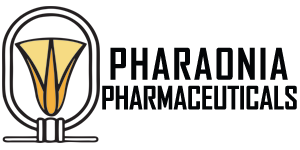

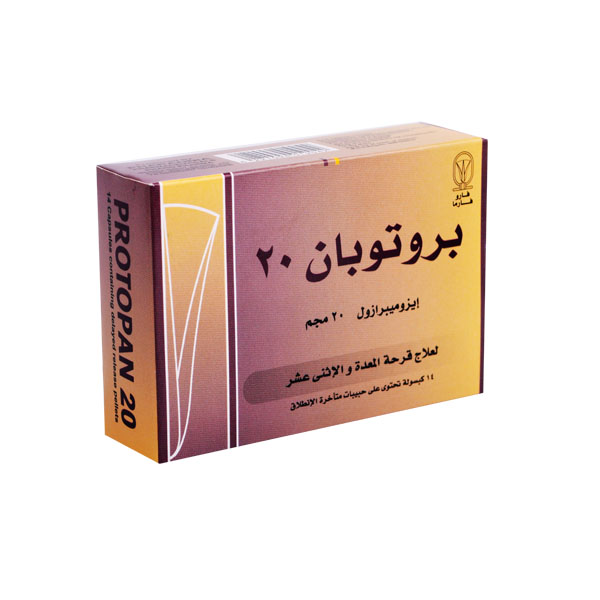
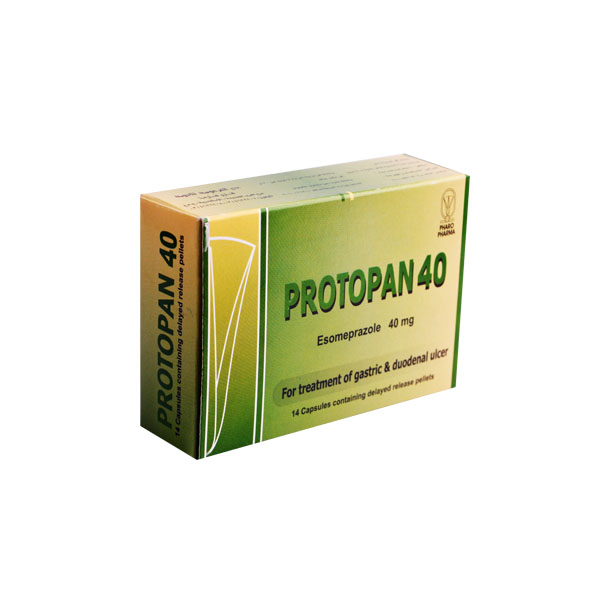

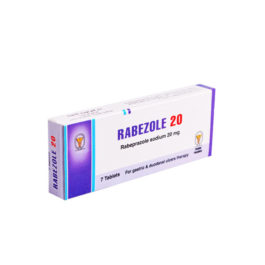

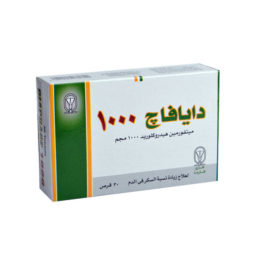
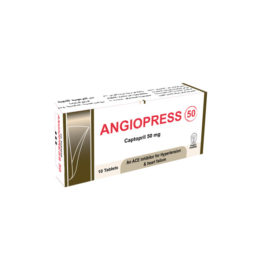
Reviews
There are no reviews yet.